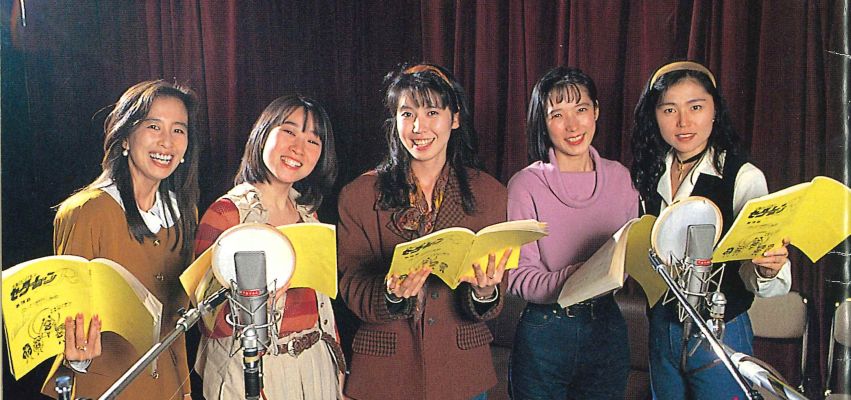
The Sailor Moon voice cast (left to right: Michie Tomizawa (Rei); Rica Fukami (Minako); Kotono Mitsuishi (Usagi); Aya Hisakawa (Ami); Emi Shinohara (Makoto))
One thing I absolutely love about Sailor Moon is the multitude of reasons why fans love the series and the different routes that brought them into our shared fandom.
Probably like many of you, I was drawn in by the fantastic story, beautiful art, and relatable characters. Sounds familiar, right?
But what kept me sticking around over the past 20+ years was something a little deeper: a fascination with how this story came to be and a passion to learn everything I could about the Sailor Moon universe.
Today we’re going to take a “look behind the curtain,” if you will, and see exactly what went into creating a Sailor Moon episode from start to finish. If you’ve ever wanted to know how all these amazingly talented people came together to create perfection, read on!
As I’m sure you can imagine, there are quite a few steps involved in creating a single anime episode, and Sailor Moon was certainly no different. While much of the information outlined here is probably applicable to other anime of the era — and possibly even some of the anime being produced today — everything discussed herein comes from Sailor Moon-related resources.1234
Scenario
The first step to creating an episode is, of course, to write the story. This is done during the scenario writing process where the writer will give basic descriptions of the scenes and events that take place, what the characters say, etc. No pictures are yet drawn at this point and the script still isn’t finalized, but it essentially lays the foundation for the episode to be built on.
Now, the question that always nags at me is: just how involved was Ms. Takeuchi in this process? Considering how far the anime strayed from the manga, my initial instinct would be to say “very little.” However, according to both series director Junichi Sato5 and Ms. Takeuchi herself,6 she actively pitched ideas and discussed the individual story lines with the anime staff.
I suspect that this dropped off as she got busier, but Ms. Takeuchi was at least involved early in the series’ life.
Storyboard
This is when the episode director steps in and begins turning the approved scenario into the makings of an anime. Not only are they responsible for taking the text descriptions and turning them into imagery (through the use of rough sketches), but their responsibilities also involve describing how the camera will move, reworking the dialogue, adjusting the pacing (down to the second) and figuring out where they can use “animation banks” (transformation and attack sequences, etc.) to reduce animation needs.
Some fun trivia: since Japanese shows (traditionally) only had one commercial break, episodes were broken up into “A part” and “B part,” with the eye-catch/cut taking place in between.
Note that at this point the final episode title is often still undecided. If you’re lucky enough to find either a scenario book or storyboard, you might find that the title is fairly different from what aired!
Animation
While this is all thrown under one umbrella, this is actually one of the most complex steps. Without getting bogged down into the crazy dynamics of how bringing pictures to life works, it’s important to note that each and every scene and movement is generally broken up into key frames7 and inbetweens,8 with the key animators only drawing the beginning and ending of a movement. The actual animation of that movement is done by another team, either in-house or outsourced.
While there are several key animators working concurrently, it’s the animation director’s job to go through these key frames and make edits to make sure the animation is consistent.
In order to save on time, the animation director only marks up the parts of the picture that needs to be changed. If something is fine as-is and will still fit into the revised drawing, then it’s left out. You can see that in the picture above with Makoto’s hand. No revision was needed and it was thus left alone.
Once the art is done, it’s xerographed onto a transparent sheet of vinyl for painting.
Backgrounds
Strictly speaking, this step is actually performed concurrently with the animation process with both teams working in tandem to ensure they’re using the right colors and scale. Each background is marked with the corresponding number of the cel that it’s used with in order to make the job a bit easier.
Painting
Once all the sketches were xerographed onto vinyl, they were then ready for painting. As I’m sure many of you are already aware, animation cels are almost always painted from the back In order to preserve all of the fine detail work put in by the animation team.
This has the added bonus of speeding up the painting time because the painters can fill in whole areas that are the same color without worrying about removing any lines.
Now a little bonus fact: Toei Animation went through so much water-based acrylic paint that they actually used to manufacture it themselves. This carried with it the added benefit of the fact that they could make custom colors just for their anime. You’ll often see the numbers/codes associated with these paint colors on the art reference sheets so the painters don’t use the wrong one.
Photography
With the animation cels and backgrounds now complete, it’s off to photography where each and every single cel is placed on its respective background and photographed. The technician would then progress the film, take another picture, and continue on like that until the episode was done.
In case you were curious, the standard for Japanese anime at the time was 8 cels per second of animation,9 a process known as “limited animation.”10
Even with this lower count, though, they were hardly slacking off. A 22 minute anime episode would still run over 9,00011 individual cels.
Editing
For the sake of convenience, and likely due to the timing when the backgrounds and cels were painted, anime episodes are generally not shot in order. That’s where the manual editing process of splicing together film comes in.
It’s also worth noting that this is also where the previously mentioned animation banks (transformation and attack scenes, the eye catches, opening and ending, etc.) are added in.
Audio Recording
Finally it’s time to actually record the audio! The script is mostly finalized at this point in the process, because if it weren’t the animation would fall out of sync with what the characters are saying in the event that a line ran too long or too short. The script is based largely on the storyboard, but containing only the text descriptions and no images.
You’ll note, however, that I did say mostly. Before the proper audio recording begins, the cast gathers together and watches through the animation while reading their lines. This gives them a chance to mark where they’ll need to add emphasis on a line, what the character’s reaction is on screen, etc.
The voice cast in Sailor Moon were known to request to make changes to dialogue to something they felt would fit their character better. In fact, some of Usagi’s memorable and quirky lines were thanks to Kotono’s quick wit. Unless there was a specific reason not to, the animation directors would usually defer to the voice cast with regarding to phrasing and lines.
Though I can’t find a hard number anywhere, it looks like Sailor Moon episodes were recorded about 3 weeks before airing. I can say this with a fair degree of certainty because Kotono notes that she fell ill and was hospitalized on January 22, 1993, on her way to a Sailor Moon recording session. Episode 44, the first episode where Kae Araki took over as Usagi, aired on February 13, 1993.
And that, dear friends and readers, just about covers the immense amount of love, dedication, and hard work that went into bringing this awesome series to life.
As odd as it may sound, knowing about what went on behind the scenes adds a whole new dimension of enjoyment for me when watching the anime or reading through the manga, so I just love learning about things like this. I hope you find this as interesting to read as I did to research!
If you’re interested in reading up on more behind the scenes information that doesn’t fit into the blog, translations of Naoko’s 90s manga liner notes, and more, consider joining me on Patreon! Right now I’m translating through the storyboards for episode 45 — the dramatic end to the Sailor Senshi and the episode that traumatized a generation — and will be adding them shortly.
References:
- Overview of the entire creative process comes from an interview conducted with Junichi Sato on June 18, 2018 ↩
- Further information on the process comes from Nakayoshi Anime Album Pretty Soldier Sailor Moon Classic Volume 2; see pp. 81-87 ↩
- Information on the recording process comes from Kotono Mitsuishi’s autobiography Moon, Star, Sun ↩
- See The Animation process of Sailor Moon courtesy of Sailor Moon News ↩
- See fn. 1; when asked, he stated that they would hold meetings with Ms. Takeuchi and/or her editor Fumio Osano before the scenario was approved ↩
- See vol. 1, Act 3, p. 87 of he original manga; Ms. Takeuchi states in her liner note that she pitched three different ideas for how Jadeite would get involved with the Hikawa shrine and she changed her mind at the last minute ↩
- See Key Frame (Wikipedia) ↩
- See Inbetweening (Wikipedia) ↩
- See 第2回 アニメの「コマ打ち」とは何か ――井上俊之が語る「コマ打ち」の特性 ↩
- See コマ (映画・漫画) (Wikipedia) ↩
- Totally intentional. ↩
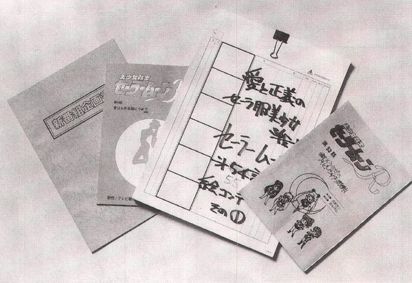
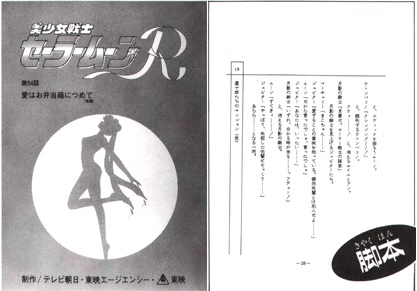
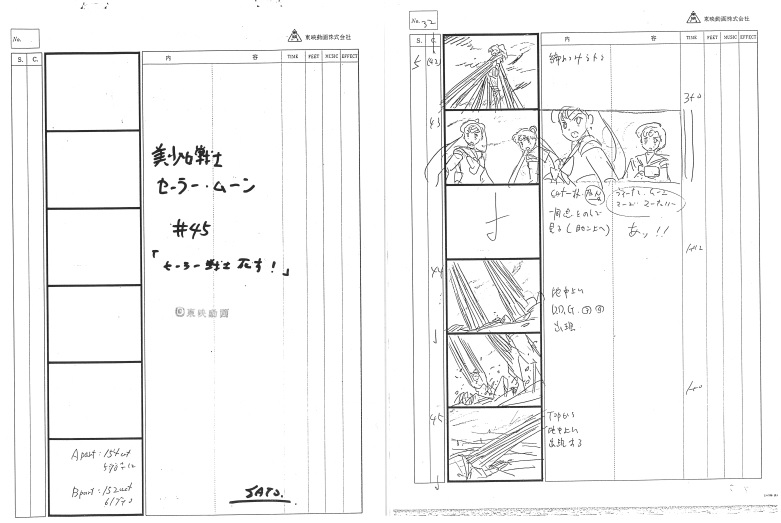
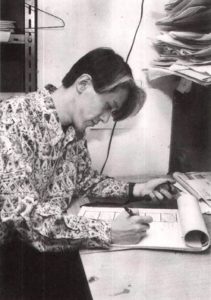
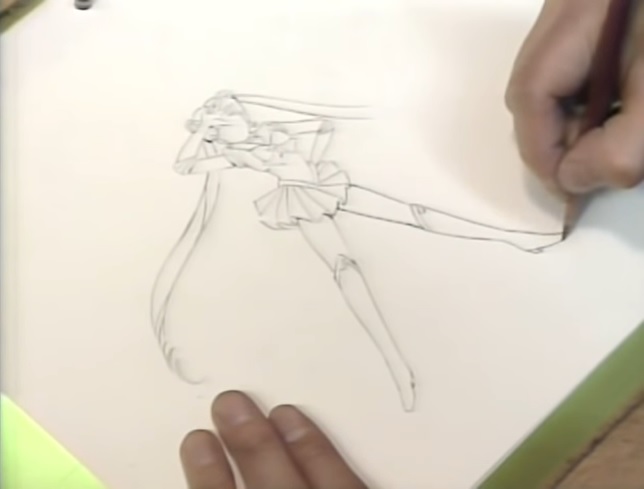
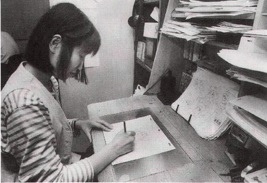

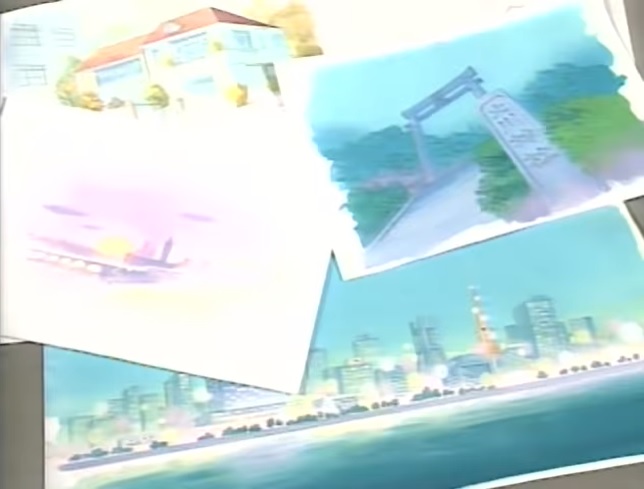
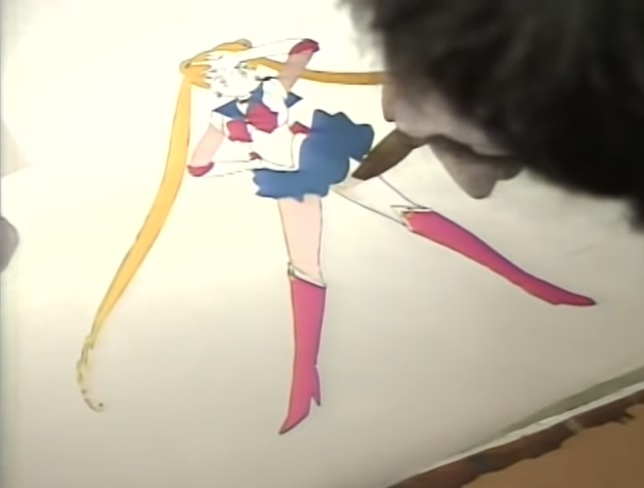
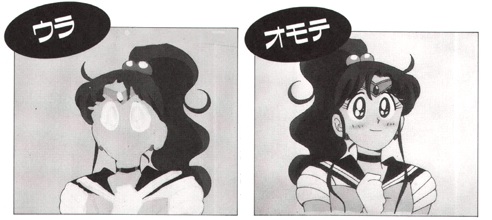
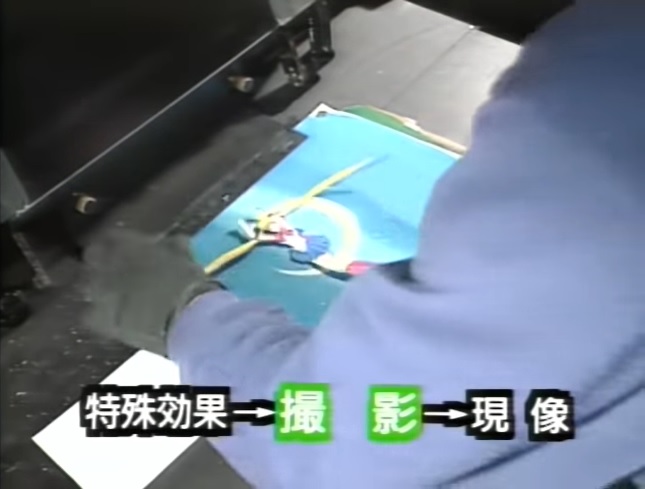
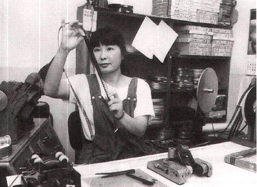

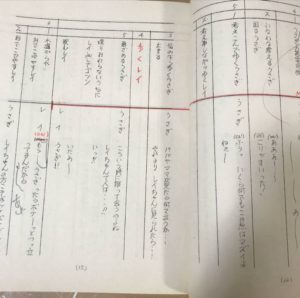
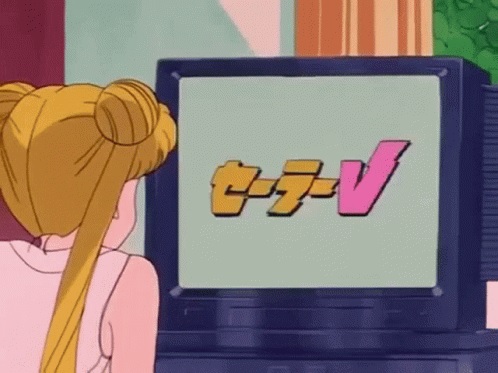

This reminds me of an article I wanted to ask you to do someday, in fact, it’s pretty closely related and at first, I thought you’d read my mind!
Is there a chart of any kind that shows how the manga and anime flowed alongside one other, like a timeline that would let us know where the manga was at compared to the anime showing on TV at the same time?
We know the manga was always falling behind and that is one of the reasons the plots are so different, but a chart kind of showing how this played out would be awesome to see.
Seeing some of these detailed sketches and noting how the cells were painted from behind reminds me that even though it isn’t the most beautiful…Sailor Moon was still an incredibly pretty anime at times. Those colors, the details, amazing!
Without any real knowledge of this case or the industry of Shoujo anime adaptions, I suspect Toei got a road map for the Dark Kingdom stuff at the beginning and just rolled with it. The anime treated the manga like a very rough sketch of the story. They loosely adapted chapters 1-5 (Usagi, Ami, Rei, Masquerade Ball, Makoto) in episodes 1, 8, 10, 22, 25, with small embellishments like giving Rei a personality and the Nephrite-Naru arc. They also boosted Mamoru’s age by like three years, made him a serial amnesiac, and scrapped his early relationship with Usagi. Maybe they did all this to make the show more palatable to parents watching with their children (making Mamoru a competent adult instead of a snob teenager who dresses up in white tie) and in anticipation of the “big reveal” scenes planned I assume long in advance. Toei loves the big reveal episodes in all their anime.
Up until the Makoto episode, the anime at least on occasion copied scenes and lines directly from the manga, but afterward, they don’t seem to have been referencing it at all. (?) My guess is that at that point Takeuchi decided herself to change course, since both the anime and manga were a hit and she knew she could continue for more than a year.
So it’s not so much that the anime deviated from the manga: but that the manga artist herself probably deviated significantly from the road map she gave Toei at the start for a self-contained one-season anime. Hence, following Nephrite’s death, the anime demonstrably begins to gear up for the “original” Everyone Dies ending, with nearly no reference to the manga, because the manga no longer fit what Toei wanted to make. The remaining major events, like Minako showing up, Usagi becoming Princess Serenity, Mamoru getting brainwashed, and the bad guys losing, are in the anime because they are absolutely necessary parts of the plot which were presumably laid out from the beginning. But Minako’s arrival, Mamoru’s brainwashing, the ending, etc., have only nominal resemblance between the anime and manga, and to compare them is probably fruitless as they are more different than they are similar.
Another great article and I don’t know how you keep finding this stuff and coming up with all of this content. I really enjoyed reading it… my only comment about the topic is that I’m surprised it was only 8 frames of animation per second. Of course, many scenes have the characters standing still with just mouths moving so that gives the animators a break.
But I remember the action scenes looking fairly fluid and nice-looking by animation standards. Maybe just a little choppy compared to standard 24 frames per second television, but not much worse… I might have guessed 16 fps, or 12 at the least.
If Sailor Moon was 8 fps then what were other shows that did look choppy in comparison? Just 4 or 6 I assume? Maybe there’s a trick to it, maybe the Sailor Moon artists were so talented they knew how to make 8 fps look smoother by drawing the motion in a certain way.
Funny to think that all these years later, Sailor Moon Crystal doesn’t look nearly as good as the original, and neither do some other modern shows, even though the process has been made easier with computer animation instead of being hand drawn.
8 frames per second means they swapped out the painted cels during normal motion shots 8 times a second. The animation is still photographed at 24fps though, because there is much more going on than cel swapping. Linear movement, both of the painted cels across a background, and also with camera work like pans and zooms, all are photographed for 24 unique frames per second. Visual effects like sparkly stuff and fog are also going at 24fps. Think of it like this: say a baseball is being animated as flying across the sky. The ball will move further across your TV every 1/24th of a second. But, the ball itself will change its appearance (to represent spin) every 1/8th of a second; that is, every third frame. It takes nearly no effort to scoot a drawing of a ball across the lens, but it takes some effort, along with celluloid and paint, to draw a new ball in a new angular position, even if they reuse the cels for several cycles.
In addition, it’s an artistic choice to limit animation this way. In Disney-esque animation, a character’s mouth is animated at 12 or 24 frames per second and very accurately mimics the motion of a person speaking English. Since anime uses limited animation already, they have the option to dial it up to eleven and do exaggerated lip flaps, which make the limitation very obvious for a humorous effect. On the other hand, they can occasionally increase the animation fluidity. Think of the Shine Aqua Illusion stock animation, which has several moving cels going at 24 fps. Sometimes normal cel animation is bumped up to 12fps when the motion absolutely requires it, or for dramatic effect.
=D Thanks for the awesome explanation!